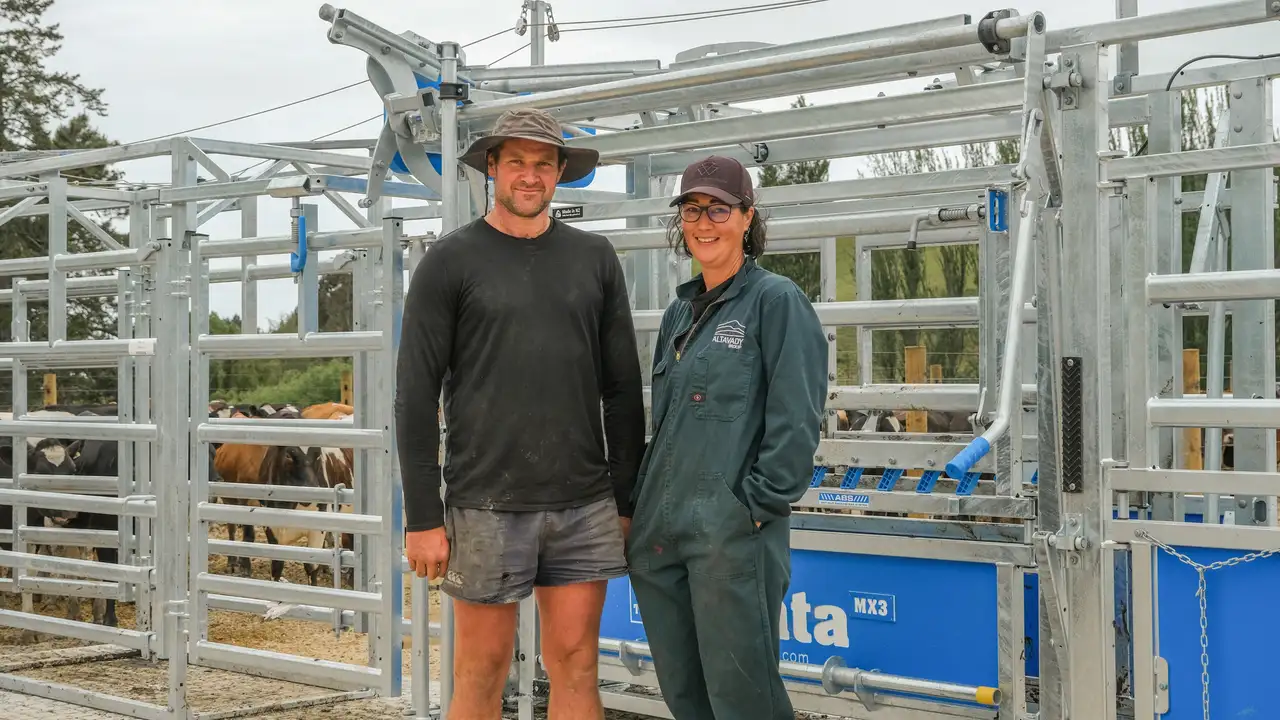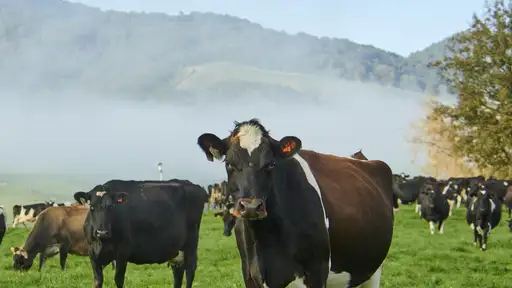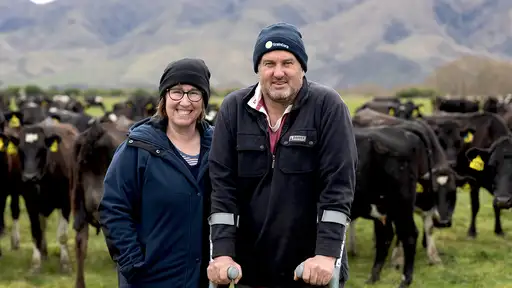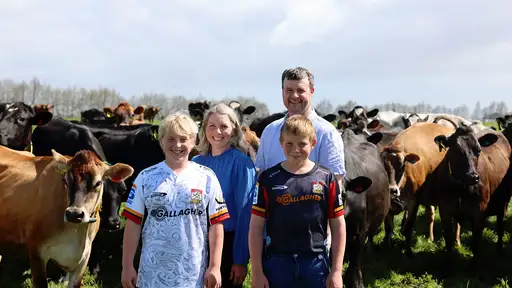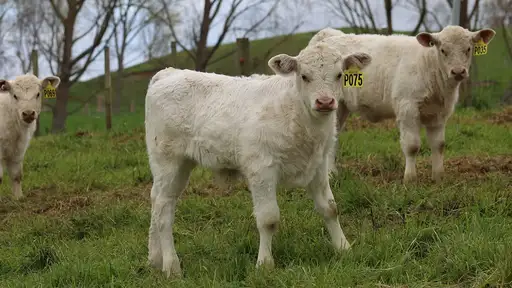Joe and Becky Laming of Altavady Group near Oamaru, are managing a large dairy operation in North Otago with precision and a sharp eye on the future. With over 3,200 cows across their four herds and more than 1,900 rising one- and two-year-olds, this is a business not only focused on scale, but sustainability, efficiency, and genetic progress.
Working alongside their LIC Agri Manager, Amanda Bisset, the Lamings have embraced sexed semen as a cornerstone of their mating plans, with the aim to streamline dairy beef integration and accelerate their genetic gain.
“We’ve got a fair bit of run-off land and are quite motivated in terms of sustainability. We’re a pretty big business with a milking herd of 3,200, so we’re trying to push our dairy beef quite hard,” says Joe.
He continues; “We’re targeting about 1,000 heifer replacements and about 1,000 dairy beef at the same time, but with 3,200 cows you’re really pushing your limits with conventional dairy semen. “We’re trying to breed more dairy beef.
That’s a tall order using conventional semen alone. That’s where sexed semen comes in.
“We’re really trying to progress our dairy beef product, while also working out what direction it’s best to head in, sexed semen is helping us explore all the opportunities… it gives us much more scope to try different (beef) breeds and still get early-calving,” explains Joe.
By almost doubling the chances of getting a heifer replacement through use of sexed semen, Joe says he targets his best gBW, and youngest, genetics with the product: “We’re inseminating our heifers (with sexed and conventional) using a synchrony programme, and then targeting our very best gBW, or best genetic cows for sexed. This allows us to target our larger more-Friesian animals for the dairy beef.”
Their automated drafting system combined with SenseHub® Dairy collars ensures heat detection and cow selection are efficient and highly targeted.
“Before the AB tech even arrives, everything’s already mapped out,” says Joe. “We plug all the data, BW, breed makeup, into a spreadsheet, and it tells us exactly what semen to use for each cow. It’s streamlined, and it works.”
Their targeted approach is delivering results, with genetic gains outpacing the national average, a trend the Lamings attribute largely to their use of sexed semen. “The rate of improvement in our herd is way faster than the national average – we’re making really significant gains, really quickly, with sexed semen,” says Joe.
“To make sure we target the highest-BW animals we fix how much sexed semen we want, and we’ll make sure about two-thirds of that is allocated to the first three weeks, so then the other third we’ll still use to target those higher-BW animals on their return… rather than putting it all in the first three weeks, and having to compromise your top BW group,” they say.
For the Lamings, the aim is to breed more valuable dairy beef animals—and finish them all in-house. That means beef calves must not just be high-performing but fit within the broader system.
Calving date is critical Joe explains; “With conventional semen, beef calves would come later, and suddenly they’re five weeks behind the start line. Sexed semen lets us front-load the beef animals too.”
Having moved away from short gestation Angus, the group is now trialling breeds like Profit Maker®, Charolais, Belgian Blue and Stabilizer®, closely monitoring performance and weights to find the best fit. “The dairy beef has to complement our system and not compromise it.”
“We’re doing in-house trial work by looking at regular weights and that sort of thing. We have really prime land both on our dairy farms and run-offs and we can’t afford to be taking our dairy beef through a second winter because it puts pressure on our winter grazing system.
Joe and Becky explain that’s why they need to get the dairy beef in as early in the mating as possible, as opposed to after six weeks traditionally.
Joe and Becky are always looking for ways technology can help their business become more efficient, and collar technology certainly helped them in this space.
“We put Allflex collars (now SenseHub® Dairy collars) on about three years ago. In terms of my workload, and the way they work in the heat detection space, they certainly pay for themselves."
Before the AB Tech arrives, Joe and Becky have already got a list of the cows that have been drafted and noted whether they’re getting sexed, beef, or conventional semen. “It’s made it really easy. Traditionally you don’t know what cows are going to be on-heat, but now we know what cows are on heat before milking finishes, which allows us to be more organised and efficient.”
Looking ahead
With GeneMark® Genomics, herd testing, and regular JD and BVD bulk milk screening, the Lamings are building a high-performance herd with strong health, robust replacements, and real beef value.
Sexed semen, Joe says, is a critical part of that strategy.
“It’s a developing product. Conception rates have improved with stronger dosage rates, and we won’t be going away from it any time soon.”
For the Lamings, when you farm at scale it’s about doing it smarter, faster, and more sustainably.
